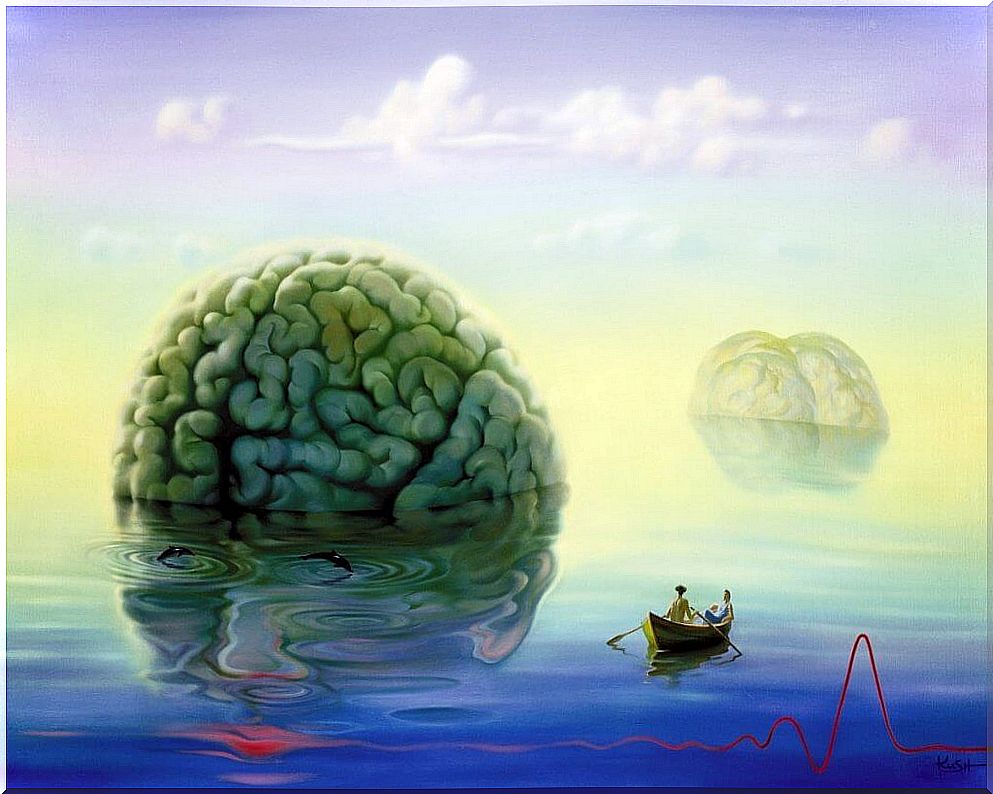The Insula Is The Source Of Our Emotions And Of Empathy

The insula is an area of the brain that is as mysterious as it is crucial to understanding human behavior. Some say that’s where our “conscience” is. Currently, neurologists can only say that this structure rather acts as the source of our emotions. That’s where our empathy and our intuition live.
Neuroscience is a fascinating discipline that never ceases to amaze us. A few years ago it was discovered that some people were able to quit smoking overnight and without withdrawal problems. Why? When they had an MRI done, the researchers found a small lesion in the insula.
They also found that alexithymia is linked to a problem in the exact same area of the brain. Alexithymia is when a person has quite a hard time feeling empathy for the emotions of others. They actually have trouble recognizing their emotions and expressing a feeling in words. And it turns out that this problem is closely linked to this special place.
Indeed, the insula is like a magic fountain that floods every brain structure with feelings and emotions. These, in turn, make us react in a positive or negative way. For it is the insula that gives us such feelings as aversion, pride and desire. It’s also the structure that helps us understand people and even let us react to music in an emotional way…

The insula, a multifunctional structure and the source of our emotions
The insula is a small area of the brain cortex that is located inside a lateral groove. To reach it you would have to dive into the deep fissure that separates the frontal and parietal lobe of the brain from the temporal lobe.
Interesting to know is that, if we were still in the 80s, we could only say that it is a dark area of the brain. We could only mention that it is a structure with unknown functions. For years, this zone has been the subject of hundreds of hypotheses.
But in the 1990s, some more light could be shed on it. Thanks to advances in analytical and diagnostic techniques, this theoretical spot is no longer obscure. For they have made astonishing discoveries. Multiple studies were conducted on patients with brain damage in the insula. They have shown that the insula actually plays a very large role in many of our daily activities. It is also the source of our emotions.
Now if we ask scientists what processes this area carries out, they can give a complete and interesting answer. The insula is, as it were, the source of our emotions and is involved in so many things: pain, love, emotions, desires, addiction, enjoying music, making decisions, tasting wine and conscience. Unbelievable right?

The insula, the cornerstone of our consciousness
Neuropsychologists tell us to be very careful when we attribute a function as vast and important as consciousness to an area of the brain. But the insula is involved in much of our social and emotional behavior. So it is not difficult to hypothesize that the insula is essential for our consciousness and the source of our emotions.
Firstly, this has to do with the fact that it is an attractive term. The second reason is that it is complicated to describe with complete precision what tasks, functions and processes the insula performs.
One caveat is worth noting though. Because they have shown something else. People with severe insula damage are completely disconnected from their environment and even from themselves. Characteristic of these persons is a deep apathy and a lack of empathy. They are unable to enjoy any aspect of life. They may not even experience aversion. This means that they would not even be able to distinguish between fresh and spoiled food.
The insula plays on your self-image
Scientists tell us that the insula is the place where our beings come together. In other words, it is the place where you become aware of your body and mind. But in order to understand it better, we want to clarify one thing. No brain structure works independently.
The mistake we may often make is saying that a particular person uses their right hemisphere because they are very creative. But then we forget that the brain is “a whole”. Every part of the brain is connected to all other parts. This organ works in perfect harmony.
The same thing happens with the insula. It is connected to the body in a physiological way. It plays a role in your sense of smell and triggers subjective feelings. The insula is involved in the feeling of hunger and even receives information from the skin receptors and from other organs. This structure helps us respond when we are hot or cold, or when something stings or itches. It’s the instinct that tells us things like, “Get out of here. You need fresh air to clear your mind.”

The insula of animals
Animals too have this amazing structure in their brains. So they also have that physical and emotional awareness. When a cat, dog, Tasmanian devil or lemur is hot, it will look for shade. An animal will also choose the fresh food and not the rotten food when it finds food. When an animal encounters another animal, its intuition will tell it whether the other animal has good or bad intentions. Instinctively, the animal will know if it is about to become prey, or if it is an animal it can socially bond with. According to neurobiologists, human beings, large primates, whales and elephants have much more complex and sophisticated insulae.
The insula and addiction
The insula itself can be divided into different zones. For example, the frontal insula is connected to our emotions. That is why we can call the insula the source of our emotions: love and hate, gratitude and resentment, shame and mistrust, empathy and contempt. Between the frontal zone and the anterior singular cortex is a certain point. This is where the processes we associate with addictions are.
When a person tries to quit smoking, certain stimuli increase craving and withdrawal symptoms. Certain smells, social situations, and scenarios intensify the fear that covertly controls the insula. This all happens because the insula is closely connected to the limbic system.
Many studies show how this small structure responds to addictive behavior. It has to do with what we know as the phenomenon of “cravings” or an intense desire to use.

We want to conclude with this. The insula can help us as humans to be the best we can be. It gives us empathy and positive feelings. But it can also bring out our negative, addictive side. Perhaps new discoveries will soon be made about this complex part of the brain that makes us human.
One last thought. When you enjoy music or a glass of wine, remember what allows you to enjoy these pleasures. Thank your insula.









